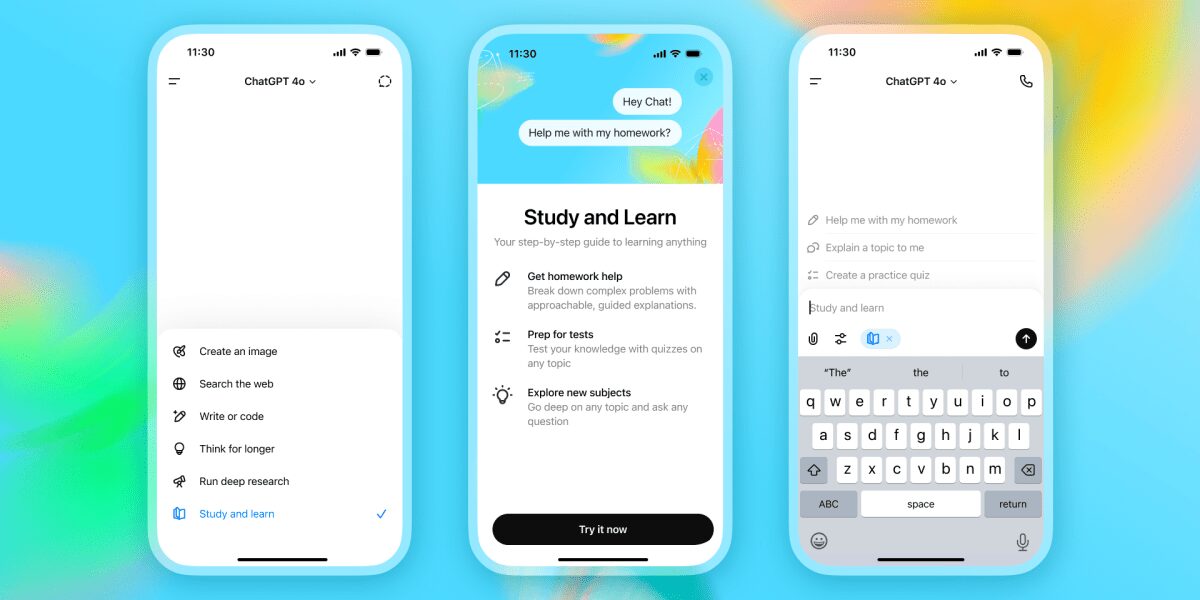Unlocking the Future of Education with OpenAI’s Study Mode
Let’s talk about something exciting happening in the world of learning: OpenAI’s Study Mode. This new feature is generating buzz among college students and educators alike, promising to revolutionize how we engage with knowledge. So, what’s the deal with this tech, and can it really make a difference in education?
What Students Are Saying
A curious group of college students from Princeton, Wharton, and the University of Minnesota recently took part in OpenAI’s testing of Study Mode. Their feedback? It’s largely positive! They found that it does a great job of checking their understanding and adapting to their pace. It’s almost like having a personal study buddy who knows exactly when to give you a nudge or slow things down.
Real Talks from Educators
Christopher Harris, an educator who’s passionate about AI literacy, believes OpenAI is onto something good with Study Mode. It draws from Socratic methods, promoting a deeper understanding. He thinks it might just give professors more confidence to welcome AI tools into the classroom. “It’s not just a tool for cheating anymore; it could actually support real learning,” he argues.
Isn’t it refreshing to hear a positive spin on AI in learning? But before we get too starry-eyed about the prospects, let’s peel back some layers.
Is Study Mode a True Game-Changer?
OpenAI isn’t stopping at just making Study Mode work; they’re working hard to reinvent the narrative around AI in education. Their latest partnership with leading teachers’ unions shows they want to recast chatbots as valuable personalized learning aids, not shortcuts for lazy students. They’re all about connecting students with quality education, which is crucial, especially for those from disadvantaged backgrounds. Leah Belsky, OpenAI’s head of education, sums it up perfectly: “We can bridge the gap between resource-haves and have-nots.”
The Bigger Picture
But let’s hit pause for a moment. Here’s the rub: while Study Mode sounds great in theory, it’s not just built on academic materials. It operates more like an enhanced version of ChatGPT. Imagine hiring a tutor who’s scoured not only the right textbooks but also the labyrinths of misinformation scattered across Reddit and Tumblr. Sounds a bit dodgy, right?
The Risk of Misinformation
When you encourage students to use a tool like Study Mode, you run the risk of inadvertently teaching them bad habits or worse—incorrect information. Imagine working tirelessly on a problem only to find out the AI led you astray with a “creative” yet completely wrong explanation. Yikes!
Professors should tread carefully. While Study Mode aims to help, it could teach students to approach problems in a way that’s misguided. And we all know that a little wrong can snowball into a big mess.
Looking Forward: Balance is Key
So, as we move forward with tools like Study Mode, it’s essential to strike a balance. AI can enhance education, but it’s not a magical fix-all. In fact, OpenAI’s aspirations might just make things a little more complicated in the long run if we’re not vigilant.
Let’s face it—technology isn’t perfect and neither are we. It’s important for educators to integrate AI thoughtfully into their curricula, blending it with traditional methods for the best outcomes.
Let’s Wrap It Up!
So, what’s your take? Is Study Mode a smart step forward in education, or is it just another shiny gadget waiting to mess things up? Whatever your thoughts, the conversation around AI in learning is just heating up, and we’d love to hear your opinion!
For more insights on how technology is reshaping our educational landscape, check out our latest article and stay tuned as we continue to explore the future of learning!
Links:
- External Link: Learn more about AI in Education
- Internal Link: Explore AI Literacy Initiatives
